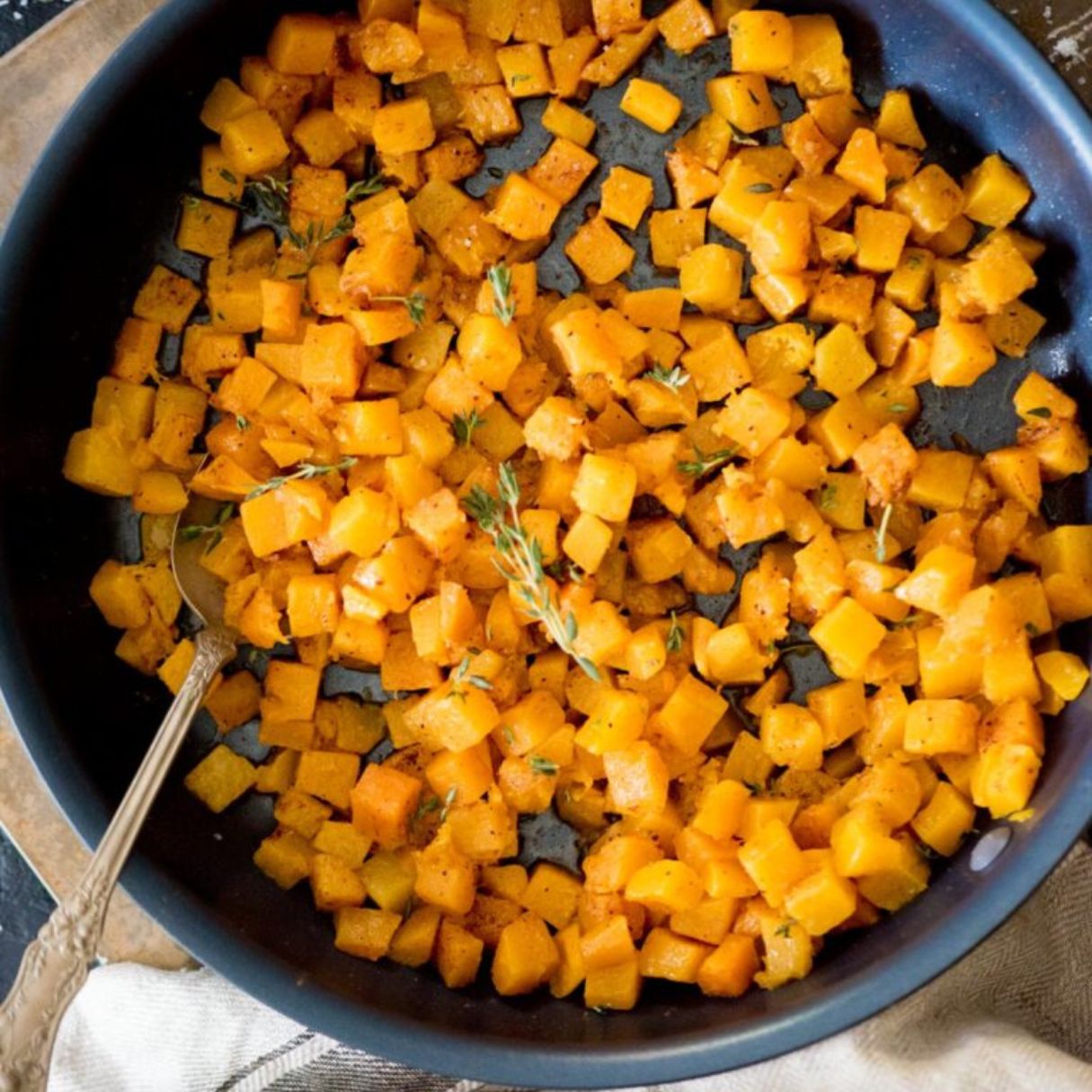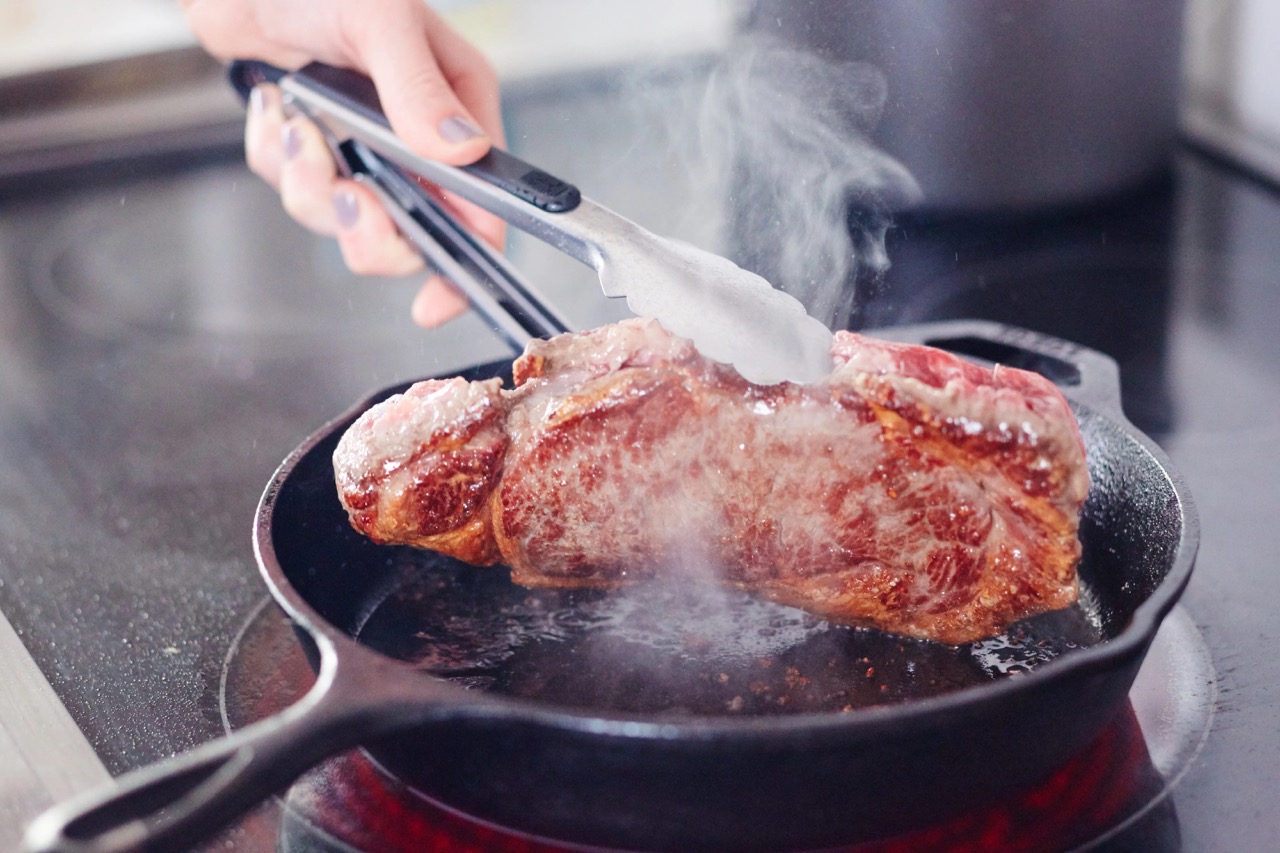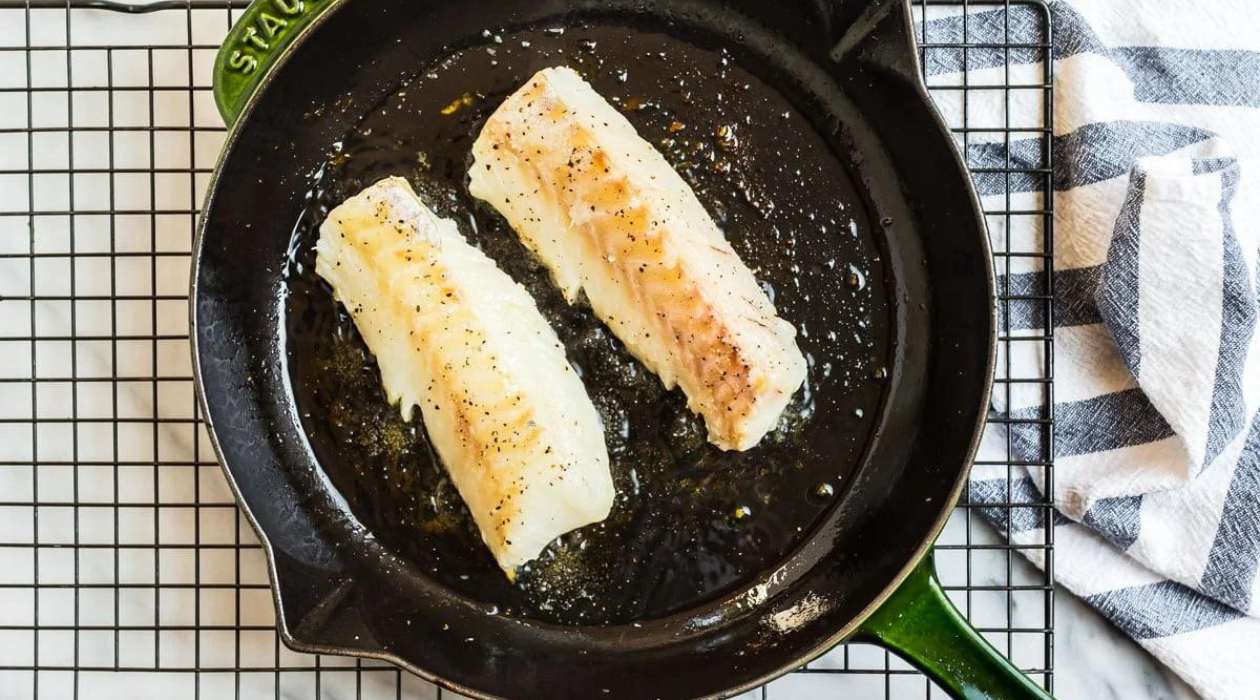

Articles
How To Cook Squash On Stove Top
Modified: February 28, 2024
Learn how to cook squash on the stove top with our helpful articles. Discover delicious recipes and expert tips for a perfect squash dish.
(Many of the links in this article redirect to a specific reviewed product. Your purchase of these products through affiliate links helps to generate commission for Storables.com, at no extra cost. Learn more)
Introduction
Welcome to the world of stove-top cooking! If you’re looking to whip up something delicious and nutritious, cooking squash on the stove top is a fantastic option. Squash is a versatile and flavorful vegetable that can be transformed into a multitude of mouthwatering dishes. From creamy butternut squash soup to savory spaghetti squash stir-fry, the possibilities are endless.
In this article, we will guide you through the process of cooking squash on the stove top, from choosing the right type of squash to seasoning and flavoring options. Whether you’re a seasoned chef or a beginner in the kitchen, we’ve got you covered with helpful tips and tricks to make your squash cooking experience a success.
So, grab your apron and let’s dive in!
Key Takeaways:
- Transform squash into mouthwatering dishes by choosing the right type, preparing it properly, and experimenting with seasoning and flavoring options. With the right techniques, you can create flavorful and nutritious meals that will impress any palate.
- Elevate your cooking game by mastering stove-top squash cooking. From slicing and dicing to seasoning and serving, unleash your culinary creativity and impress your loved ones with versatile and delicious squash creations.
Read more: How To Cook Spaghetti Squash On Stove Top
Choosing the right type of squash
When it comes to cooking squash on the stove top, selecting the right type of squash can make all the difference in flavor and texture. Here are a few popular varieties of squash to consider:
- Butternut Squash: Known for its sweet and nutty flavor, butternut squash is perfect for soups, stews, and roasting. Its smooth texture and vibrant orange color make it a favorite among home cooks.
- Acorn Squash: With its distinctive acorn shape and deep green skin, acorn squash has a slightly sweet and nutty flavor. It pairs well with both savory and sweet ingredients and can be baked, roasted, or sautéed.
- Spaghetti Squash: As the name suggests, spaghetti squash can be transformed into delicate strands that resemble spaghetti noodles. It has a mild flavor and can be enjoyed as a low-carb alternative to pasta or tossed with your favorite sauces.
- Delicata Squash: Delicata squash has a creamy texture and a subtly sweet flavor. Its thin skin is edible, which makes it easy to slice and cook. It can be roasted, stuffed, or used in soups and casseroles.
These are just a few examples of the many types of squash available. Each variety offers its own unique taste and texture, so don’t be afraid to experiment and discover your favorites.
Once you have chosen the type of squash you want to cook, it’s time to move on to the next step: preparing the squash.
Preparing the squash
Before you start cooking squash on the stove top, it’s important to properly prepare the squash. Here are the steps to get your squash ready:
- Wash the squash: Begin by giving the squash a thorough rinse under cool water to remove any dirt or debris. This step is especially important if you plan on eating the skin.
- Trim the ends: Use a sharp knife to trim off both ends of the squash. This will make it easier to slice and remove the skin, if desired.
- Peel or leave the skin: Depending on your preference and the type of squash you’re cooking, you can choose to peel the skin off or leave it on. Some squashes, like acorn squash, have tougher skins that are often removed, while others, like delicata squash, have edible skins.
- Remove the seeds: Cut the squash in half lengthwise and use a spoon to scoop out the seeds and fibrous strands from the center. You can discard the seeds or save them for roasting as a tasty snack.
Once you have prepared the squash, you can move on to the next step: slicing and dicing the squash.
Slicing and dicing the squash
Now that your squash is prepared, it’s time to slice and dice it according to your recipe or preference. Here are some common methods for cutting squash:
- Cubes: To create uniform cubes, carefully slice the squash crosswise into rounds, then cut each round into smaller pieces. Adjust the size of the cubes based on your recipe’s requirements.
- Strands: If you’re working with spaghetti squash or a similar variety, use a fork to scrape the flesh and create long strands. This technique mimics the appearance and texture of spaghetti noodles.
- Slices or half-moons: For squash varieties like acorn or delicata, you can slice them into rounds or half-moons. Make sure your slices are evenly sized to ensure even cooking.
Pay attention to the thickness of your slices or cubes depending on how you plan to cook the squash. Thinner slices will cook faster, while thicker ones will take more time to soften.
Remember to exercise caution when handling knives and ensure a stable cutting surface to prevent accidents. If you’re not confident in your knife skills, you can also use a vegetable peeler or mandoline slicer to achieve the desired shape and size.
The stove-top cooking process
Now that your squash is prepared and cut to your desired shape, it’s time to cook it on the stove top. Here’s a general step-by-step process for stove-top cooking:
- Heat the pan: Start by heating a large skillet or pan over medium heat. You can add a small amount of oil, such as olive oil or butter, to prevent sticking and add flavor.
- Add the squash: Carefully add the prepared squash to the hot pan. Spread it out in a single layer to ensure even cooking.
- Cook until tender: The cooking time will vary depending on the type and size of the squash pieces. Generally, squash will take about 10-15 minutes to cook on the stove top. Stir occasionally to prevent sticking and ensure even cooking.
- Check for doneness: To check if the squash is cooked to your desired tenderness, pierce it with a fork or knife. It should slide in easily without resistance.
Keep in mind that the cooking time can be adjusted based on your preference. If you prefer softer and more tender squash, cook it for a longer time. For a firmer texture, reduce the cooking time slightly.
It’s important to note that different squash varieties may require different cooking times. For example, denser varieties like butternut squash may take longer to cook compared to softer varieties like zucchini.
Once your squash is cooked to perfection, it’s time to enhance its flavor by seasoning and flavoring it with various options.
When cooking squash on the stove top, make sure to cut it into evenly sized pieces for even cooking. Use a non-stick pan and cook over medium heat with a bit of oil or butter until the squash is tender.
Read more: How To Bake On The Stove Top
Seasoning and flavoring options
Now that your squash is cooked, it’s time to amp up the flavor with a variety of seasoning and flavoring options. Here are some popular choices:
- Herbs and spices: Sprinkle your cooked squash with a combination of herbs and spices to add depth and flavor. Common choices include garlic powder, paprika, cumin, thyme, rosemary, or Italian seasoning.
- Citrus zest: Add a burst of freshness to your squash by grating some citrus zest over the top. Lemon, lime, or orange zest can bring a bright flavor to your dish.
- Sauces and dressings: Drizzle your squash with sauces or dressings to elevate the taste. You can use options like balsamic glaze, soy sauce, honey mustard, or a tangy vinaigrette.
- Cheese: For a creamy and indulgent twist, sprinkle grated cheese over your cooked squash. Parmesan, feta, cheddar, or goat cheese are delicious choices.
- Nuts and seeds: Toasted nuts and seeds can add crunch and an extra layer of flavor to your squash. Try sprinkling some toasted almonds, pumpkin seeds, or sesame seeds on top.
- Butter or olive oil: For a simple yet flavorful option, toss your cooked squash with a knob of butter or a drizzle of extra virgin olive oil. This will enhance the natural sweetness and richness of the squash.
Feel free to mix and match these options to suit your taste preferences. Don’t be afraid to experiment and discover unique flavor combinations that make your squash dishes truly memorable.
Now that your squash is seasoned to perfection, it’s time to explore some cooking tips and tricks to ensure success in the kitchen.
Cooking tips and tricks
To make your stove-top squash cooking experience even better, here are some helpful tips and tricks:
- Use a non-stick pan: Using a non-stick pan will help prevent the squash from sticking to the bottom and make cleanup easier.
- Keep the heat medium-low: Cooking squash over medium-low heat allows for gentle and even cooking, preventing it from burning or becoming mushy.
- Cover the pan: Covering the pan while cooking can help steam the squash, resulting in a softer texture. However, be mindful to uncover and stir occasionally to prevent overcooking.
- Don’t overcrowd the pan: It’s best to cook the squash in batches if your pan is not large enough. Overcrowding the pan can hinder proper cooking and result in unevenly cooked squash.
- Add a splash of liquid: If you notice that the squash is drying out or sticking to the pan, you can add a splash of vegetable broth, water, or even white wine to create steam and prevent sticking.
- Add delicate ingredients last: If you’re incorporating delicate ingredients such as fresh herbs or avocado, add them towards the end of the cooking process to maintain their flavor and texture.
- Adjust seasoning to taste: Taste your squash during the cooking process and adjust the seasoning as needed. Everyone’s palate is different, so feel free to customize to your liking.
By keeping these tips in mind, you’ll ensure that your stove-top squash dishes turn out perfectly cooked and bursting with flavor.
Now that you’re equipped with cooking knowledge, it’s time to explore some serving suggestions to present your delicious squash creations.
Serving suggestions
Once your stove-top cooked squash is ready to be served, here are some creative ways to enjoy and present your flavorful creations:
- As a side dish: Serve your cooked squash as a simple and nutritious side dish alongside grilled chicken, roasted meats, or a hearty main course.
- In salads: Toss the cooked squash into fresh green salads to add a burst of color, texture, and flavor. It pairs well with leafy greens, nuts, and tangy dressings.
- In pasta dishes: Mix the cooked squash into pasta dishes for a healthier and more flavorful alternative to traditional sauces. It pairs particularly well with creamy Alfredo sauce or a zesty marinara.
- Stuffed squash: Scoop out the cooked squash and stuff it with a delicious filling like quinoa, roasted vegetables, or even ground meat. Bake it in the oven for a wholesome and satisfying meal.
- In soups and stews: Blend the cooked squash with other ingredients to create creamy and comforting soups or stews. It adds a velvety texture and natural sweetness to your favorite recipes.
- On top of pizzas: Use the cooked squash as a flavorful topping for homemade pizzas. Combine it with other vegetables, cheese, and your favorite sauce for a unique and delicious twist.
- In grain bowls: Build a nourishing grain bowl by incorporating the cooked squash with grains like quinoa, farro, or brown rice, along with protein, vegetables, and a tasty dressing.
Feel free to get creative and experiment with these serving suggestions to suit your taste preferences and dietary needs. The versatility of cooked squash makes it a fantastic addition to various dishes.
Now that you have explored different ways to serve and enjoy your stove-top cooked squash, it’s time to conclude this culinary adventure.
Conclusion
Cooking squash on the stove top opens up a world of delicious possibilities. Whether you’re preparing a side dish, incorporating it into salads, pasta dishes, or even making stuffed squash, the versatility of this vegetable shines through. With the right selection of squash, proper preparation, and cooking techniques, you can create flavorful and nutritious meals that will satisfy even the most discerning palates.
Remember to choose the right type of squash based on your recipe and personal preference. Take the time to properly wash, trim, and slice the squash to ensure even cooking. Experiment with seasoning and flavoring options to enhance the natural flavors of the squash. And don’t forget to utilize cooking tips and tricks to achieve the perfect texture and taste.
Once your stove-top cooked squash is ready, let your creativity run wild with serving suggestions. Incorporate squash into side dishes, salads, pastas, soups, and more. The possibilities are endless, and you can tailor them to your own culinary preferences.
So, next time you’re in the mood for a flavorful and nutritious dish, don’t hesitate to pull out your trusty skillet and start cooking squash on the stove top. With a little culinary ingenuity, you’ll be able to transform this humble vegetable into a mouthwatering masterpiece.
Now, go ahead and unleash your inner chef as you embark on your squash cooking adventure. Get ready to delight your taste buds and impress your family and friends with your stove-top squash creations. Happy cooking!
Frequently Asked Questions about How To Cook Squash On Stove Top
Was this page helpful?
At Storables.com, we guarantee accurate and reliable information. Our content, validated by Expert Board Contributors, is crafted following stringent Editorial Policies. We're committed to providing you with well-researched, expert-backed insights for all your informational needs.















0 thoughts on “How To Cook Squash On Stove Top”